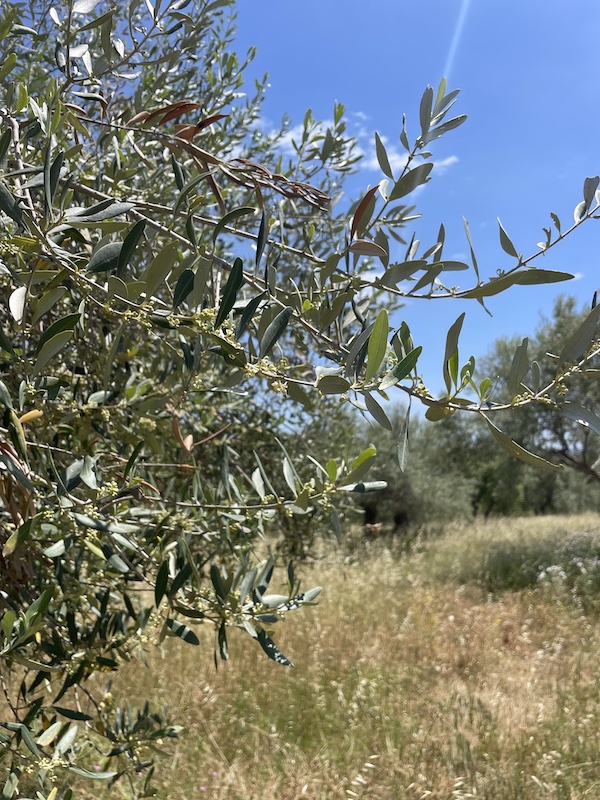Olive trees are wind-pollinated. This means a lot, the first is that the tiny flowers, which appear in late spring or early summer, are pollinated by the wind carrying pollen from one tree to another.
Because of this, it’s important where olive trees are planted, must be in an area with good air flow but not so much. Also important are spaced far enough apart to allow the wind to carry the pollen effectively. This was the way and according with traditional farming this is still the best.
In addition to good air flow, there are a number of other factors that can impact the pollination of olive trees. These include temperature, humidity, and the timing of the flowering period. If the weather is too cold or too hot, or if the humidity is too high, the pollen may not be able to travel effectively, leading to poor pollination and a reduced yield.
This will help to ensure that the flowers are exposed to the maximum amount of pollen possible, increasing the chances of successful pollination.
To further enhance pollination, some olive growers may choose to use specialized equipment or techniques. For example, some farmers use fans to increase air flow around their olive trees, while others may use bees or other pollinators to supplement the wind's efforts.

